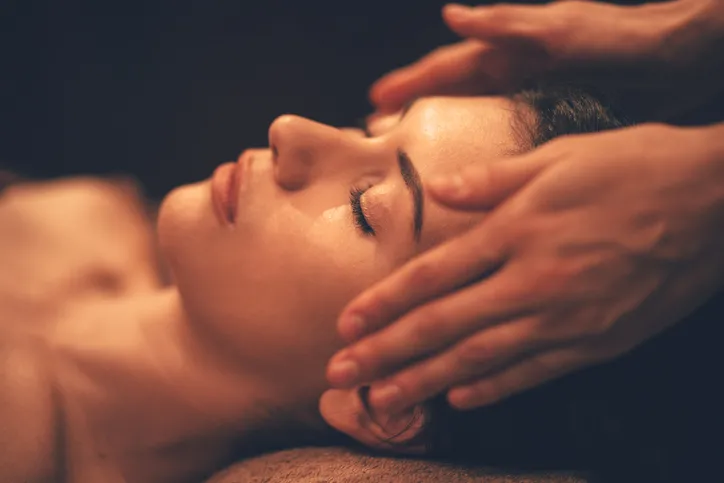In today’s world, the lines between luxury and accessibility have blurred significantly. Many items and experiences that once indicated a certain level of wealth and exclusivity are now readily available to the masses. This democratization of luxury has been driven by factors such as technological advancement, globalization, and changes in consumer spending habits. Let’s explore ten status symbols that used to scream “wealthy” but are now as ubiquitous as your local coffee shop.
1. Smartphones Were Once the Ultimate Elite Gadget

Remember when the first iPhone was released? It was 2007, and owning that sleek touchscreen device was a clear sign you were ahead of the curve and likely had some cash to burn. Back then, smartphones were a rare sight, often reserved for business executives or tech enthusiasts with deep pockets. Fast forward to today, and Pew Research Centre estimates that over 85% of Americans own a smartphone, making it one of the most common gadgets around. These devices have become essential tools for communication, work, and entertainment, transcending their status as luxury items.
The widespread availability of affordable smartphones has leveled the playing field, allowing people from various economic backgrounds to enjoy the perks of modern technology. The fierce competition among smartphone manufacturers has driven down prices while still offering impressive features. This democratization means that even high-end models, once reserved for the wealthy, are now attainable through installment plans or discounted deals. Ultimately, while owning the latest smartphone model may still carry some prestige, it’s no longer a definitive marker of wealth.
2. Luxury Cars Have Become More Accessible Than Ever

Luxury cars, with their sleek designs and high-performance capabilities, were once a clear indication of wealth. The sight of a brand-new Mercedes or a shiny BMW in someone’s driveway was enough to signal financial success. However, the landscape has changed dramatically, thanks to options like leasing, certified pre-owned vehicles, and competitive financing plans. According to industry experts on AutoTrader, these options make luxury vehicles more affordable and accessible to a broader audience.
Moreover, the rise of ride-sharing services and car subscription models has further eroded the exclusivity once associated with luxury cars. Today, you can experience driving a high-end vehicle without the long-term commitment, making it a more commonplace experience. The automotive industry has also seen a growth in hybrid and electric luxury vehicles, appealing to environmentally conscious consumers. This shift reflects a broader trend of luxury being integrated into everyday life, moving away from being a mere symbol of wealth to a more practical choice for many.
3. High-End Fashion Brands Have Gone Mass-Market

There was a time when owning a piece from a high-end fashion brand like Gucci or Louis Vuitton was a definitive status symbol, suggesting opulent tastes and a healthy bank account. These brands were traditionally seen on the runways of Paris and Milan, far removed from the average consumer. However, thanks to strategic partnerships, such as designer collaborations with retail giants—think H&M x Balmain—these luxury brands have made their way into the wardrobes of everyday fashionistas. According to fashion analysts, these collaborations have significantly increased accessibility to high-fashion items.
Simultaneously, the rise of resale platforms and rental services has also transformed how we view luxury fashion. Websites like The RealReal and Rent the Runway allow consumers to buy or rent luxury items at a fraction of the original price. This shift has made it possible for more people to enjoy what was once considered unattainable luxury. As a result, owning a luxury brand item no longer solely signifies wealth but rather a keen eye for style and savvy shopping skills.
4. International Travel Is No Longer Just for the Wealthy Few

Traveling internationally used to be a privilege reserved for the wealthy, with first-class flights and luxury accommodations as the norm. But with the advent of budget airlines and the proliferation of online booking platforms, international travel has become accessible to a much larger audience. Today, you can find affordable flights to destinations worldwide with just a few clicks, making the dream of exploring far-off places a reality for many.
Additionally, the rise of short-term rental services like Airbnb has provided travelers with more cost-effective accommodation options, further reducing the barriers to international travel. The ability to travel internationally is no longer a status symbol but rather a reflection of personal priorities and values. Nowadays, people prioritize experiences and cultural immersion over material possessions, and their travel choices often reflect this shift. While luxury travel options still exist, they now coexist with more affordable alternatives, allowing people from various economic backgrounds to explore the world.
5. Homeownership No Longer Exclusively Denotes Wealth

Once upon a time, owning a home was one of the ultimate indicators of financial success and stability. It meant you could afford to invest in property and, by extension, had a solid financial foundation. However, the concept of homeownership has evolved significantly in recent years. With the rise of flexible living arrangements like co-living spaces, tiny homes, and the increasing popularity of long-term rentals, the traditional notion of owning a home as a status symbol is being challenged.
The housing market’s volatility and the shift toward urban living have also influenced this change. Many people, especially younger generations, are prioritizing experiences over property ownership, opting to save their money for travel, education, or starting a business. This shift in priorities has contributed to a more diverse understanding of wealth and success, where owning a home is no longer the sole marker of financial achievement. Instead, the focus has shifted towards financial independence and the freedom to choose one’s lifestyle.
6. Fine Dining Experiences Are Now for Everyone

Dining at a Michelin-starred restaurant or indulging in a multicourse tasting menu used to be the epitome of luxury, a rare treat for those with deep pockets. These culinary experiences were once reserved for special occasions or business deals, where wealthy patrons wined and dined in style. However, the food industry has undergone a major transformation, with celebrity chefs and innovative dining concepts bringing fine dining experiences to a broader audience.
Food television shows, online recipes, and food blogs have made gourmet cooking more accessible to home cooks, elevating everyday meals to fine dining quality. Meanwhile, pop-up restaurants and food festivals have democratized access to high-end cuisine, allowing foodies to sample dishes from top chefs without breaking the bank. This democratization of fine dining has shifted the focus from exclusivity to exploration and education, where people from all walks of life can savor the joys of exceptional food without the hefty price tag.
7. Spa and Wellness Retreats Are No Longer a Luxury

Once considered indulgent and exclusive, spa treatments and wellness retreats were previously reserved for the affluent. The mere mention of a spa day conjured images of plush robes, cucumber slices, and a hefty bill at the end. However, the wellness industry has exploded in recent years, making these once-luxurious experiences more accessible to the general public. With the rise of affordable day spas, subscription wellness services, and discounted packages, pampering oneself is no longer a privilege of the wealthy.
Moreover, the focus on mental health and self-care has permeated society, encouraging people to prioritize their well-being regardless of their economic status. Local wellness centers, yoga studios, and meditation classes have become community staples, providing affordable access to relaxation and rejuvenation. As a result, spa and wellness experiences have shifted from being exclusive indulgences to essential practices for maintaining a balanced lifestyle. This change reflects a broader societal shift toward valuing health and wellness over material possessions.
8. Education and Learning Opportunities Have Expanded

Higher education has long been a status symbol, with prestigious universities and Ivy League schools serving as gateways to success for those who could afford them. A degree from such institutions was a clear indicator of wealth and privilege, often opening doors to lucrative careers and elite social circles. However, the landscape of education has changed dramatically, thanks to the rise of online learning platforms and open-access resources. Today, anyone with an internet connection can access a wealth of knowledge from esteemed universities, leveling the playing field for learners worldwide.
The proliferation of massive open online courses (MOOCs) and the democratization of education have made it possible for individuals from diverse backgrounds to gain valuable skills and knowledge without the hefty tuition fees. This shift has broadened the definition of educational success, where practical skills and lifelong learning have become more important than institutional prestige. As a result, education is no longer a definitive status symbol but rather a personal journey of growth and development, accessible to anyone willing to learn.
9. Technology Gadgets Are Part of Everyday Life

Gadgets like tablets, smartwatches, and high-tech home assistants were once the domain of tech-savvy elites with the means to indulge in the latest technology. These devices represented the cutting-edge of innovation, with high price tags that kept them out of reach for many. However, as technology has advanced and competition in the market has intensified, these gadgets have become more affordable and integrated into everyday life. It’s not uncommon to see people from all walks of life using smartwatches to track their fitness goals or smart speakers to play their favorite tunes.
The widespread adoption of these technologies reflects a broader trend of connectivity and convenience, where gadgets enhance daily routines and simplify tasks. This shift has democratized access to technology, moving it away from being a luxury to an essential part of modern living. As a result, owning the latest gadget is no longer a status symbol but rather a reflection of the changing landscape of technology and its impact on our lives. Today, technology is a tool for empowerment and efficiency, available to anyone willing to embrace it.
10. Personal Trainers and Fitness Classes Are for Everyone

Hiring a personal trainer or attending boutique fitness classes used to be a luxury reserved for the wealthy, often associated with Hollywood celebrities and high-profile individuals. These personalized fitness experiences were seen as the epitome of health and wellness, with a price tag to match. However, the fitness industry has evolved, with a plethora of affordable options now available to the masses. From online workout subscriptions to budget-friendly group classes, staying fit and healthy is no longer a privilege of the wealthy.
The rise of fitness influencers and community-based workout programs has also contributed to the democratization of fitness, making it more inclusive and accessible. People from all backgrounds are encouraged to participate in fitness activities, whether through virtual platforms or local community centers. This shift has transformed personal trainers and fitness classes from exclusive experiences to essential components of a healthy lifestyle. As a result, prioritizing fitness is no longer a status symbol but a reflection of a commitment to well-being and self-care, embraced by people from all walks of life.
This article is for informational purposes only and should not be construed as financial advice. Consult a financial professional before making investment or other financial decisions. The author and publisher make no warranties of any kind.








